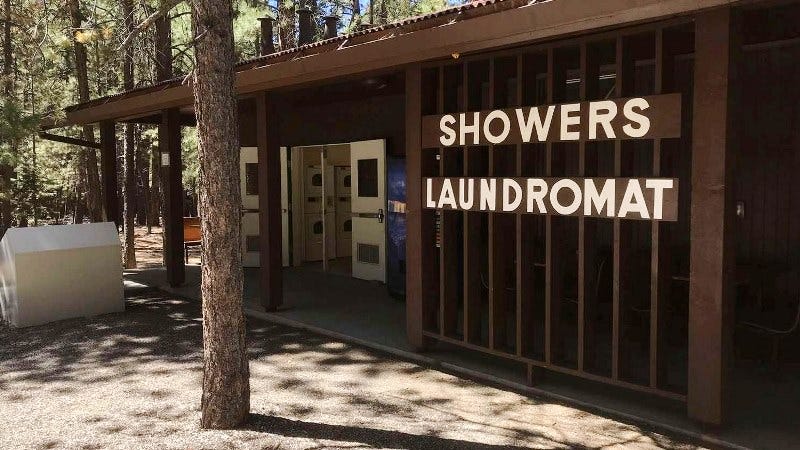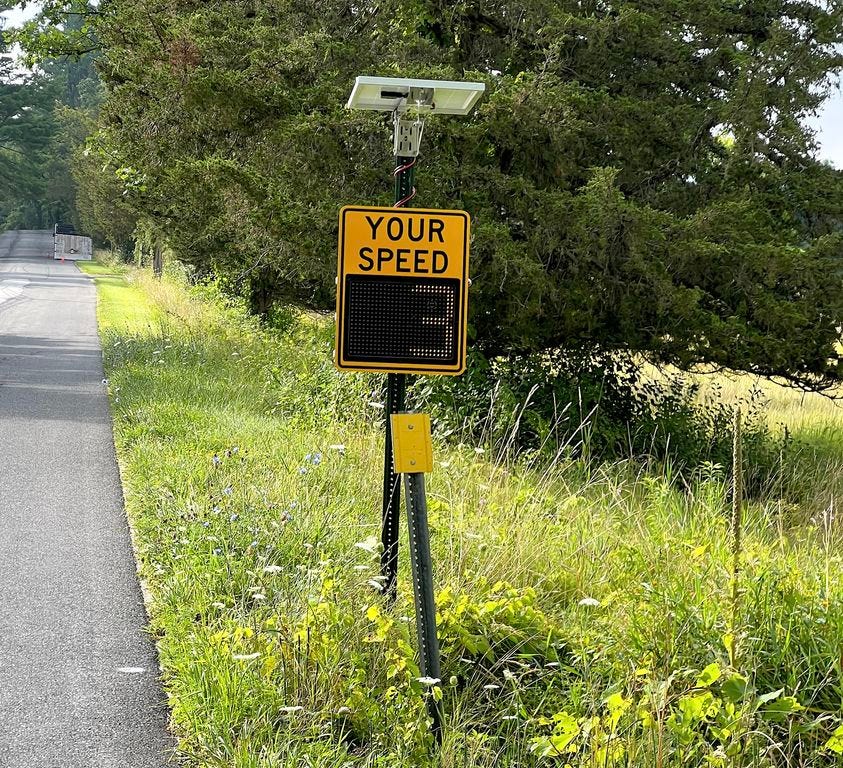“Don’t forget your quarter!” When I went camping last summer (for the first time in my adult life, I chose a place with hot showers. When I checked in at North of Highland Camping, the clerk asked if we needed quarters, “for the shower.”
The showers were in separate stalls with a small changing area, and to start the water there was a machine that took quarters (a US coin worth 25 cents). There was plenty of hot water, for 7 minutes.
Seven minutes is enough time, I found, and I would hurry to rinse so I wouldn’t be caught with soapy hair. I never needed a second quarter.
This strikes me as a perfect example of “nudging.” Paying 50 cents or even 75 cents for a long shower is unlikely to worry anyone, but knowing there was a limit changed our behavior. I heard groups of kids, showering after a day at the beach, calling back and forth about how they could beat the timer.
Nudging has got a lot of press lately because it turns out that some of the data that got academics and policy wonks excited was falsified by a superstar Harvard professor. It could be that signing an Honor Code doesn’t work the way it used to. But that doesn’t make the concept false.
Nudging includes what’s often called “social contagion.” This is a subtle form of peer pressure: often unconscious changes we make because of the people around us. See an older friend on a bike? You’re probably more likely to get on your own bike next weekend. What about the friends who have given up a second car, and still manage?
I’m more and more convinced that there is a phenomenon you might call “wedding contagion”, whereby the process of seeing someone in your social circle tie the knot forces the other couples in the group into the emotional equivalent of a margin call. Some are able to put up the required collateral and get married. Others decide that what they are looking at is very much a dead shark and call it quits. A similar process leads to babies and city breaks in undiscovered jewels in the former eastern bloc.
There is some academic evidence for my hunch: a study of American women from 1995 to 2009 found that your likelihood of having a baby went up if your friends started having them. Research shows that divorce can also have contagion-like effects in friendship groups, so why shouldn’t marriage? —Stephen Bush in the FT
Many nudges that used to help us manage our money are gone. I remember, for example, mentally adding up the items in my grocery cart so I would have enough money when I got to the cash register. Now I just hand over a card. Spending money is easier and easier, so we end up in debt - or at least anxious. Who benefits? The financial services industry. Similar friction exists when it comes to reducing consumption and waste.
And there are different ways to change behavior. Congestion pricing or better public transportation? (Or both.) Speed bumps or speed indicators (radar speed signs)?
Speed indicators are far cheaper and more flexible, and we’re seeing a lot of them here in New England. Local journalist Terry Cowgill shared this photo, which seems like a good nudge to pick up the pace! He’s sent me a few examples of how they operate with cars, too.
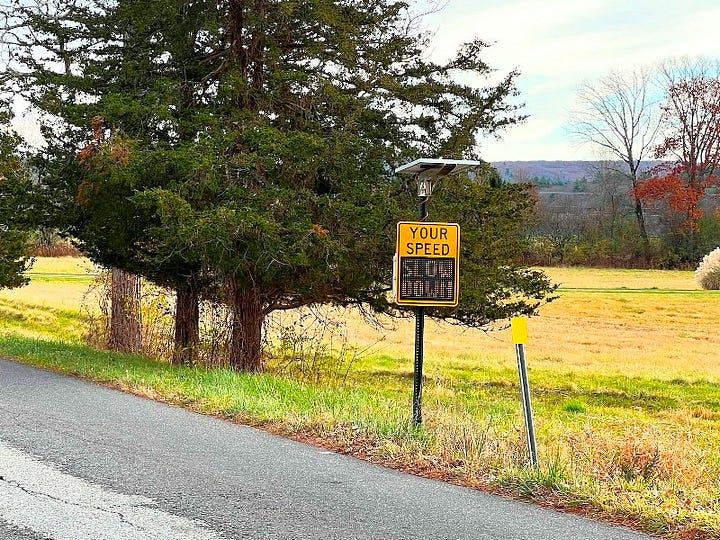
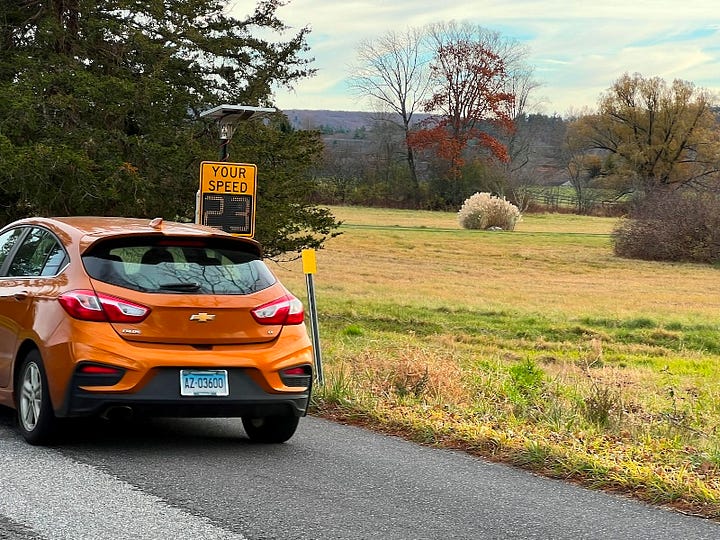
How about road closures, designed to encourage people to walk or ride a bike? This can backfire, at least temporarily, as this article in the Financial Times explains:
Measures such as LTNs [low-traffic neighbourhood] are just the start, says Professor Lorraine Whitmarsh, an environmental psychologist and director of the Centre for Climate Change and Social Transformations (CAST). A report by the International Energy Agency states that behavioural change will account for nearly two-thirds of the energy reduction needed to reach the net-zero goal. “The sort of things that are going to be most effective to get to net zero will involve quite a significant degree of invasion in people’s lifestyles,” says Prof Whitmarsh, “Unfortunately, the public isn’t really aware of how much things are going to change.” According to CAST, most emission reductions can be made in transport, diet and household energy use. If the UK adopted the World Health Organization recommendations for diet, for example, it could reduce greenhouse gas emissions from food by nearly a fifth. . . . Felix Weisbrich, head of roads and green spaces on Berlin’s Friedrichshain-Kreuzberg district council, is in charge of rolling out the area’s latest Kiezblock scheme to turn the popular Bergmannstrasse neighbourhood into a playground for pedestrians and cyclists. “If you change the system, you change the way they organise their mobility. And that takes time,” he says. In his experience, it takes three to six months for the complaints to stop.
In my neighborhood, the road around Lake Mansfield has just been closed entirely, and construction crews are now turning the entire area into a park. To get to the beach, we’ll have to use a bike/walking path, or drive all the way around town to approach from the other side. This was controversial a couple of years ago. But instead of making an abrupt closure, the road became one-way, with a narrow walking path on the lake side. The people who had been using the road to avoid Route 7 traffic vanished. There were more walkers, cyclists, swimmers, canoeists. And the road finally closed entirely this month, with neither a bang nor a whimper.
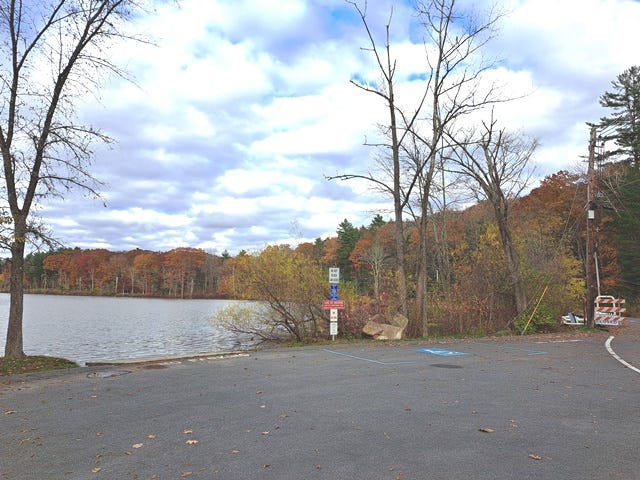

I love the kind of “nudge” suggested in the wonderful book City Comforts, now out of print, by David Sucher of Seattle: slowing cars simply by building street corners differently:
These infinitesimal elements of a city’s street engineering code have a large influence on our behavior as drivers and pedestrians. One key code standard is the “turning radius” of the curb at intersections.
This turning radius is determined by the placement of the curb and is the size of the circle that will fit in the corner. The smaller the circle’s radius, the sharper the turn. The sharper the turn, the slower one must drive. . . . In addition, the narrower curve places the pedestrian closer to the goal: the other side of the street.
Narrowing streets has the same effect, as Fred Kent and Kathy Madden of the Social Life Project have amply demonstrated in their wonderful photo gallery. But traffic-calming can be done in other ways, too. Town planners, designers, and engineers need training in behavioral science!
A lot of nudges can be built in, like the pinging when you haven’t closed the freezer door completely. But we need more visual clues: ways to see the unnecessary waste we create, the extra fuel we use by driving too fast with saggy tires. Keeping your car tires inflated is a standard “green driving” tip. But checking tire pressure isn’t convenient (though modern air stands at service stations are a big improvement). What if there was an easy way to see the pressure in each tire?
And it pays to look for alternatives, instead of depending on what stores want us to buy. In past years, I’ve used a floating pond heater to keep a hole open in the pond when it freezes, to keep the water oxygenated for the frogs who spend the winter at the bottom. But the heater uses electricity and is a hassle to monitor. I spend 10 minutes looking for other options. Now the frogs (see bottom right of photo) have their own bouncy-ball to keep the ice from freezing solid. Apparently a tennis ball will work, too.




